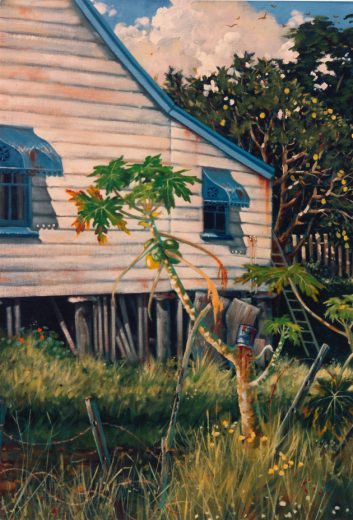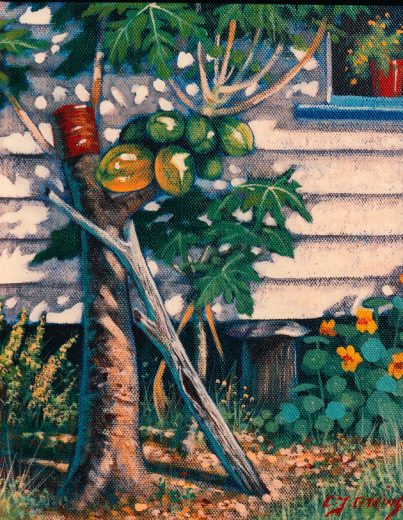
Papaw in the Backyard
Many of the old gardens of Queensland featured ancient papaw trees cared for with much love. Papaw plants can produce fruit that is either succulent or not so much. Ancient plants that bore luscious fruit were treasured, not just for their produce, but also for their seed. To grow a tasty papaw was a neighbourhood feat. In an age when there was no TV etc, the ability to grow a flavoursome papaw and share its precious seeds carried bragging rights.

By the Window
In New Zealand where I grew up, growing tropical fruit was not an option. When I came to Queensland, I was fascinated by the ancient papaw plants barely clinging to life, propped up with wooden forks, protected from damp by old tins. I wondered why these decrepit plants were kept alive while taking up valuable garden space. The magic was in the taste of the fruit.

Old House with Papaw
Later I tried to grow papaw in my garden, but they can’t stand wet feet and must be planted in raised beds. Whenever I grew a really healthy plant, it always turned out to be a male tree which doesn’t bear fruit. Growing papaw is heartbreakingly difficult – don’t ask me how I know that. They are easily damaged by wind, frost and damp. If ever a plant produced something close to ripe fruit, either the flying foxes or the possums got to it before me. So I have a lot of respect for those who once grew and lovingly nursed those ancient plants.

Picking the Papaws

Ripening Papaws
Next Exhibition
My next exhibition of paintings will be held at the Metcalfe Gallery, Brisbane Institute of Art, Windsor. Open from 27th August to the 8th September, 2021,10am – 4pm. Please send me a note and I’ll email you a reminder two weeks before the start.
Christine




